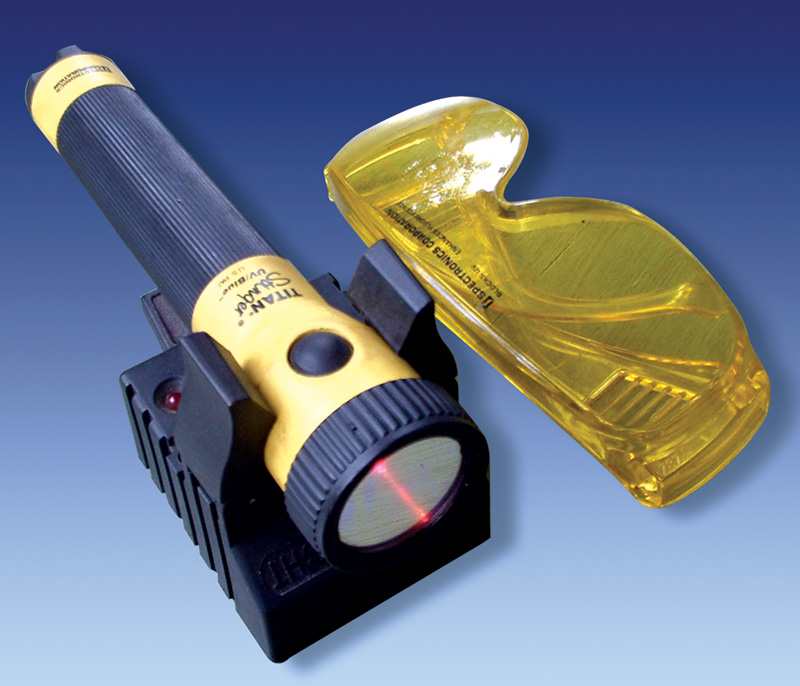A streamlined approach to finding out what’s wrong
Suppose your customer is no longer getting that refreshing arctic blast at the dash vents of which he or she had become so fond. Perhaps the air is barely cool, or presents no evidence of refrigeration whatsoever.
Ask some questions. Has the condition developed gradually or occurred suddenly? Has any work been done on the system? If so, what and when? The customer won’t be able to remember exactly, but maybe he or she can find receipts.
A performance check is certainly in order. Now, doing this with the utmost accuracy is a complicated subject involving temperature, humidity, factory procedures, etc., but mostly you’ll know what to do next simply by measuring the duct temperature. Remember, though, that the humidity level can affect output by as much as 15 deg. F.
You may have noticed that we at StarTuned are always harping on the importance of checking the basics, so look for obvious external problems. Is the compressor belt loose? Has the condenser collected any airflow-blocking leaves, fast-food wrappers, etc? Is the heater stuck on? Can you feel a draft of outside air at the vents while driving? Is the engine running hot? Is that declutching fan permanently declutched, or is that electrical air mover never coming on?
Next, look at the compressor clutch with the controls switched on. If it’s engaged, the basic system is working and there’s at least a moderate amount of refrigerant present because if there weren’t, the lost charge safety device used in the clutch energization circuit would have tripped. Providing there are no external problems, weak cooling is probably due to a low charge, moisture and/or air in the circuit, a restriction, or a problem with the heater controls. Suspect that last item if clamping off the heater hoses brings duct temp down by more than about five degrees.
In cases where the compressor is indeed turning, let the system stabilize for 10 minutes on Max at fast idle, then feel the hoses near the compressor. If there’s a reasonable charge, the high side/discharge line will be warm and the low side/inlet line cool. No significant difference points to an insufficient amount of refrigerant.

The first step in diagnosis is finding out if the A/C output is indeed below what can reasonably be expected on a hot, humid day. Perhaps that motorist wants more than can be achieved.
No engagement?
A clutch that’s not engaging is an impediment to further investigation. Look for voltage and/or ground at the terminals  if the circuit’s not complete, either the safety set up is protecting the compressor, or there’s a control problem. With old Freon R-12 systems, you could use a tire gauge type A/C pressure tester to do a quick check of the charge. Anything over about 50 psi meant there was enough refrigerant present to keep the protection device from opening the circuit, so there would have to have been another reason the clutch isn’t working.
If there’s a sight glass in the system, it can tell you quite a bit providing you’ve got good eyes and sufficient light. A clear stream or just a few stray bubbles indicates a decent charge, although the glass could be clear in cases where all of the refrigerant has been lost. Â
There’s a subtlety you may never have heard of:Â Undercharge bubbles are strung together and surrounded by froth. Those caused by the presence of air are separate and aren’t accompanied by foam.
Bogus gases?
In this era of confusion, you’ve got to have a refrigerant identifier. Not only are there plenty of systems out there that have had R-134a added to replenish a R-12 charge (or even vice versa, for some reason), but we’ve actually seen cars running around with their air conditioners full of explosive propane. Also, if you want to destroy a mobile A/C system, you could hardly do better than to charge it with R-22, but that’s exactly what some misguided do-it-yourselfers, and even some technicians, have done, presumably because they think it’ll save them some money compared to using R-12 or retrofitting to R-134a. Talk about false economy!
But once you’ve identified a refrigerant cocktail, what do you do with it? Well, you could just give the customer your condolences and send him out the door, but that doesn’t fit in very well with your hard-won reputation as a person who offers helpful solutions to tough problems. Some shops have a dedicated “garbage” recovery machine, which might be an old unit or something intended for the purpose. They collect the stuff, send it off to a facility that will either destroy it or reclaim it, and charge their patrons for that service.
Gauging
Now you can attach your equipment. With the engine off and cool, a pressure reading somewhere around the ambient temperature indicates a pretty good charge with either R-12 or R-134a. But that’s about the only rule of thumb that’s valid anymore. Today, proper high side/low side and engage/disengage pressures vary all over the map. You’ve got to look up specs and procedures on WIS (www.startekinfo.com), and interpret readings in context.
If both gauges read within the specified range, the no cool condition may be due to moisture contamination. Very low pressure or a vacuum on the suction side points to a lack of refrigerant. There are numerous possible causes of excessive head pressure ranging from a lazy fan or blocked condenser fins to a flooded expansion valve, too much refrigerant, air in the system, restriction, or engine overheating.
A drastic reduction in cooling when the car slows down from cruising speed could be due to a compressor that’s going bad. Another damning symptom for the pump is a combination of high suction and low discharge pressures.
Years ago, you could do a nice, straightforward diagnosis of the compressor by clamping off the suction side and watching for a vacuum of at least 18 in. Hg. within two minutes, but those days are pretty much gone because you’d crush the impermeable liner of modern barrier hose. You can still test the output side by putting a piece of cardboard over the condenser. Growing fluctuation as the pressure rises means the discharge valve is leaky. A big swing on a regular basis indicates a bad cylinder.

Although electronic leak detectors can be useful, they’re not as positive as the UV light and dye method.
It leaks!
There’s never justification for recharging until you’ve found and repaired any leaks that may be present. Do a visual inspection first  expect an accumulation of oil and dirt at a seepage point.
Many technicians have a love/hate relationship with electronic leak detectors because they require a lot of patience and can trick you. That’s one reason the nearly-foolproof ultraviolet light and dye method has become so popular. Pass that UV lamp over all the components, hoses, and connections and leaks will show up in bright yellow.
Another good way to find out if a leak exists is to draw a deep vacuum and see if it holds (where it’s located is another matter). The reading shouldn’t drop more than two inches in five minutes. Or, you can use one of those new electronic vacuum gauges for much faster findings.
Water retention
Should you always replace the receiver/drier or accumulator when doing a full A/C service? The answer is yes, and for many good reasons. In the first place, water is the archenemy of the system. Not only does it interfere with refrigeration, it also promotes the formation of hydrochloric and hydrofluoric acids, which can eat through the evaporator. Then there’s the desiccant. If it starts to break down and gets through its bag, it’ll clog everything in sight. Just drawing down the system won’t boil much moisture out of the desiccant, and certainly won’t eliminate those particles.

This MB engineer is checking duct temperature in the HVAC development lab in much the same way as you do out there in the real world.
Retrofit?
Since many Mercedes-Benz owners keep their cars much longer than is customary with other makes, chances are you’ve still got some customers driving cars whose A/C systems are charged with R-12. MB and other authorities say you should keep systems designed for R-12 running on R-12 as long as that’s economically feasible. Making whatever repair is necessary, then recharging with R-12 will assure like-new performance and keep labor costs down. As of this writing, that is. The next time the A/C blows its charge R-12 may be fabulously expensive or perhaps not available at all at any cost.
Going to R-134a, on the other hand, is done all the time and the results are usually fine provided you do it right. After retrofit, future repairs will be relatively inexpensive because R-134a will be the standard for as long as we care to speculate (CO2 refrigerant will be a while in coming), assuring a plentiful supply, and you can be certain everybody else in the service business will have the equipment and knowledge to handle it.
One caveat:Â You should realize that while R-134a gives satisfactory performance in most cases, there’s a good chance you’ll notice that the system won’t cool down as fast or feel as ice-cold as it did on R-12.






0 Comments